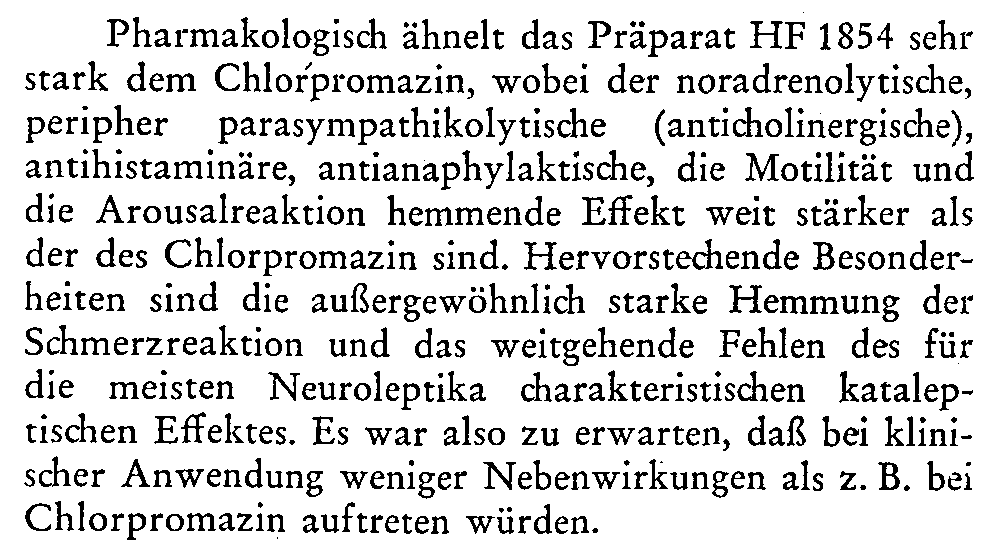Clozapine was discovered by pharmacologists and medicinal chemists
Its atypical properties were predicted from animal models
A continuing controversy in CNS drug discovery relates to the utility of animal models which I have discussed previously (see: https://zendudest.substack.com/p/why-animal-models-are-useful-for).
Today I was curious about how clozapine—the very first atypical antipsychotic drug was discovered. The essentials of the chemical ‘discovery’ of clozapine is outlined below:
Essentially, chlorpromazine and imipramine were initially synthesized as antihistamines and found via clinical observations to have antipsychotic and antidepressant actions, respectively. These discoveries led to the synthesis and testing of 1000’s of ‘tricyclic’ compounds ultimately leading to HF 1854 which now known as clozapine.
It was reported (in German) the following regarding it’s development:
A translation of this is:
“Pharmacologically, the preparation HF 1854 is very similar to chlorpromazine, although the noradrenolytic, peripheral parasympathetic (anticholinergic), antihistamine, antianaphylactic, motility and arousal-reaction-inhibiting effects are much stronger than that of chlorpromazine. Outstanding features are the extraordinarily strong inhibition of pain reactions and the extensive lack of the most characteristic effect of neuroleptics mainly catalepsy. It was therefor expected that clinically it would have fewer side-effects than chlorpromazine.”
Essentially what they reported is that clozapine differs from chlorpromazine as follows:
Greater alpha1-antagonist activity (‘noradrenolytic’)
Greater antimuscarinic (‘anticholinergic’)
Greater antihistmine
Greater sedation
Clozapine also has the lack of the cataleptic action of conventional antipsychotic drugs (‘neuroleptics). Given this the authors speculated:
‘It was therefor expected that clinically it would have fewer side-effects than chlorpromazine’
In the paper they also report:
‘Extra pyramidal side effects were not observed at all.’
So there you have it. Clozapine was invented by a chemist, discovered to have antipsychotic activity without catalepsy in experimental animals, predicted to be an antipsychotic without extra-pyramidal side effects in animals and then demonstrated to have efficacy in humans without these side-effects.






